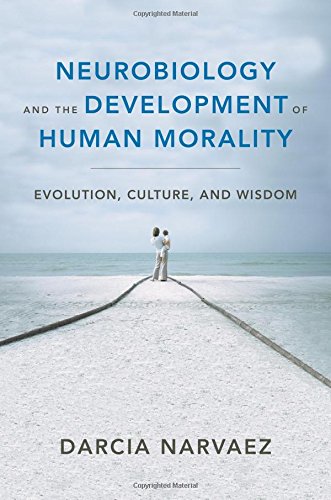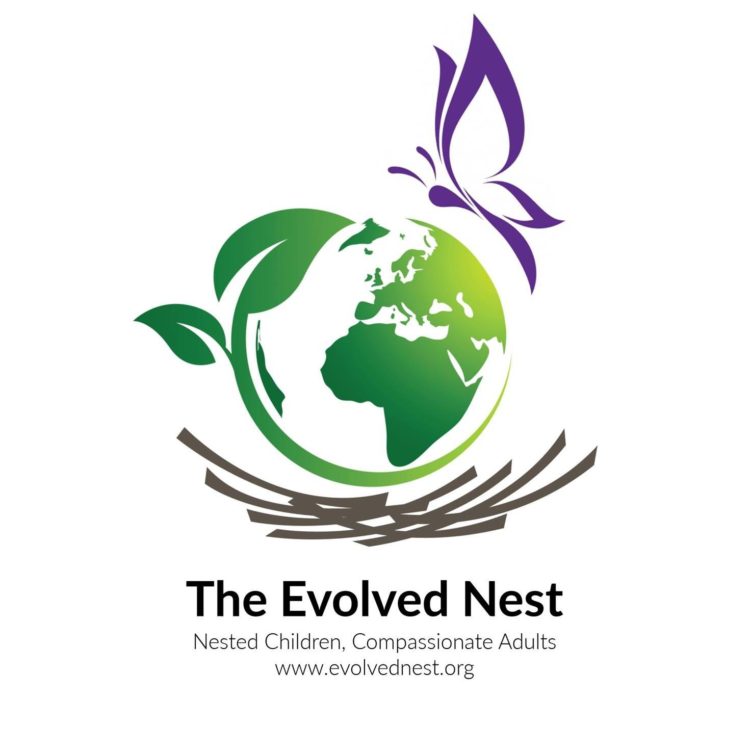Indigenous ways shape child intelligence and virtue.
For each of us to have been born, our ancestors had to be smart and good. I am referring to our ancestors who lived outside of civilization (civilization only arose in parts of the world during the last 1% of human existence; Fry, 2006) because they raised children differently than civilizations and we have reason to believe that their child raising practices (most 20-40 million years old among mammals), had been “optimized” to foster child wellbeing (Konner, 2005). Factors retained from long ago are typically indicative of optimization (Sterling, 2020).
Our ancestors had to be smart enough to successfully live in difficult physical environments (the ‘struggle against the elements;’ Kropotkin, 2006). And they had to be good enough to cooperate with group members which includes having empathy for others, controlling habits for the good of the group (which form part of Darwin’s description of humanity’s “moral sense,” the sociability key to group selection; Darwin, 1871). Both smartness and goodness helped the group survive and even thrive across multiple generations (required for “natural selection” to operate; Lewontin, 2010).
How did intelligence and goodness get supported in our ancestral environment? How did they raise smart and good children? I discuss some common principles and common child raising practices apparent among Indigenous peoples all over the world—those who still live(d) in ways similar to our ancestors.
PRINCIPLES OF LIVING
There are dozens of principles that govern Indigenous societies around the world and form what could be called an Indigenous worldview that contrasts with the dominant culture’s worldview (Four Arrows, 2020; Redfield, 1953; and see forthcoming book by Four Arrows & Narvaez). Here are two of the principles particularly relevant to raising good and smart children.
Non-Interference
Indigenous peoples respect individual dignity. There is no coercion, no force used on others, in everyday life.
“That is the principle that one Indian will never tell another Indian what to do. It is considered rude behaviour to give instructions or orders to another Native person. That’s quite different from the white society. Two white men at a cocktail party – say they’re standing there side by side – and if one of them announces he wishes to buy a pear tree another white man will immediately suggest that he buy a peach tree instead… If he ventures an opinion about music or politics somebody will immediately tell him, in a friendly way of course, what he ought to be listening to, or who he ought to be voting for. In the white society the one who can out-advise the other is one up, and the loser is expected to take his defeat with good grace. Now in the Indian society, this is not permitted. Advising or instructing, or ordering or persuading, is always considered bad form or behaviour” (Brant, 1990, p. 535).
The dignity of each person, no matter what age, is respected. Each person is unique and has their own path to follow and their own gifts to hone. Everyone exists in a web of relationships that include visible extended family (and adopted) relatives but also ancestors. There is no way for anyone to know the path and relational responsibilities others have.
The founding fathers (e.g., Franklin, Jefferson, Paine) were so impressed with the freedom that “Indians” experienced that they incorporated some of their ideas into the founding documents of the USA (Sachs et al., 2020). They wrote and commented that they much preferred the Indigenous ways of egalitarianism, consensus-seeking and individual freedom to European hierarchies and behavior control (ibid).
In fact in 1952, Felix Cohen, a lawyer specializing in Indian rights, wrote an article called: “Americanizing the White Man,” arguing that, rather than the other way around, American Indians Americanized the “hungry, fear-ridden, intolerant” Whites that came to the shore (p. 180). They shaped them with Indigenous values, making a distinctive American culture. This included tolerance: “the first thing we want to teach you is that, in the American way of life, each man has respect for his brother’s vision” (Cohen, 1952, p. 177).
Community Welfare is a Priority
Everyone grew up immersed in a supportive atmosphere guided by stories, rituals and practices of helping one another, even strangers, and respecting other than humans. No hungry or homeless people among American Indians were encountered by the Europeans. Meeting the basic needs of everyone was a priority of the community. This too impressed the founding fathers because it was such a contrast with Europe where a significant portion of the population was poor (Sachs et al., 2020). Meeting the basic needs of young children was also remarked upon (‘they love them so’).
“In the field of child care, for example, one of the great forward scientific movements at the present time takes off from the simple observation that Indian babies, brought up in traditional ways, rarely cry or stutter. Psychiatrists, pediatricians and hospital administrators are now experimenting with substituting Indian methods of child training for the rigid schedules and formulas that have controlled the antiseptic babies of the last few decades” (Cohen, 1952, p. 191).
CHILD RAISING PRACTICES
What specifically does supportive child raising look like in traditional Indigenous communities? Hewlett & Lamb (2005) summarized the common characteristics of childhoods observed by anthropologists among hunter-gatherers around the world, traditions followed among most Indigenous communities generally.
“[Y]oung children in foraging cultures are nursed frequently; held, touched, or kept near others almost constantly; frequently cared for by individuals other than their mothers (fathers and grandmothers, in particular) though seldom by older siblings; experience prompt responses to their fusses and cries; and enjoy multiage play groups in early childhood” (Hewlett & Lamb, 2005, p. 15)
We could add other characteristics that the summary did not include—e.g., soothing perinatal (gestation, birth and postnatal) experiences.
Each of these features have been discovered by neurobiological research to matter for brain development and wellbeing (Narvaez, Panksepp, Schore & Gleason, 2013). See EvolvedNest.org for details.
Intelligence and virtue are part of our heritage as human beings (Narvaez, 2014).
References
Brant, C. C. (1990). Native ethics and rules of behaviour. Canadian Journal of Psychiatry, 35, 534-539.
Darwin, C. (1871/1981). The descent of man. Princeton, NJ: Princeton University Press.
Four Arrows (2020). The Red Road: Connecting Diversity and Inclusions Initiatives to Indigenous Worldview. Charlottesville, N.C.: Information Age Publishing.
Four Arrows, & Narvaez, D. (in final preparation). Indigenous eloquence and kincentric flourishing: Selected quotes and worldview reflections to rebalance the world. Berkeley: North Atlantic Books.
Fry, D. P. (2006). The human potential for peace: An anthropological challenge to assumptions about war and violence. New York: Oxford University Press.
Hewlett, B.S., & Lamb, M.E. (2005). Hunter-gatherer childhoods: evolutionary, developmental and cultural perspectives. New Brunswick, NJ: Aldine.
Kropotkin, P. (1902/2006). Mutual aid: A factor of evolution. Charleston, SC: BiblioBazaar.
Lewontin, R. (2010). Response to Colin Wells’ comment on review called “Not so Natural Selection” (of book, What Darwin got wrong on May 27, 2010). New York Review of Books. Downloaded on October 11, 2018 from https://www.nybooks.com/articles/2010/09/30/what-darwin-got-wrong/
Narvaez, D. (2014). Neurobiology and the development of human morality: Evolution, culture and wisdom. New York, NY: W.W. Norton.
Narvaez, D., Panksepp, J., Schore, A., & Gleason, T. (2013). Evolution, early experience and human development: From research to practice and policy. New York: Oxford.
Redfield, R. (1953). The primitive world and its transformations. Ithaca, NW: Cornell University Press.
Sachs, S.M., Johansen, B.E., Haas, A., Donohue, B.B., Grinde Jr., D.A., & York, J. (2020). Honoring the Circle: Ongoing Learning of the West from American Indians on Politics and Society, Volume I: The Impact of American Indians on Western Politics and Society to 1800. Cardiff, CA: Waterside Productions.
Sterling, P. (2020). What is health? Allostasis and the evolution of human design. Cambridge, MA: MIT Press.

TAKE THE 28 DAYS OF BABY CARE CHALLENGE!



